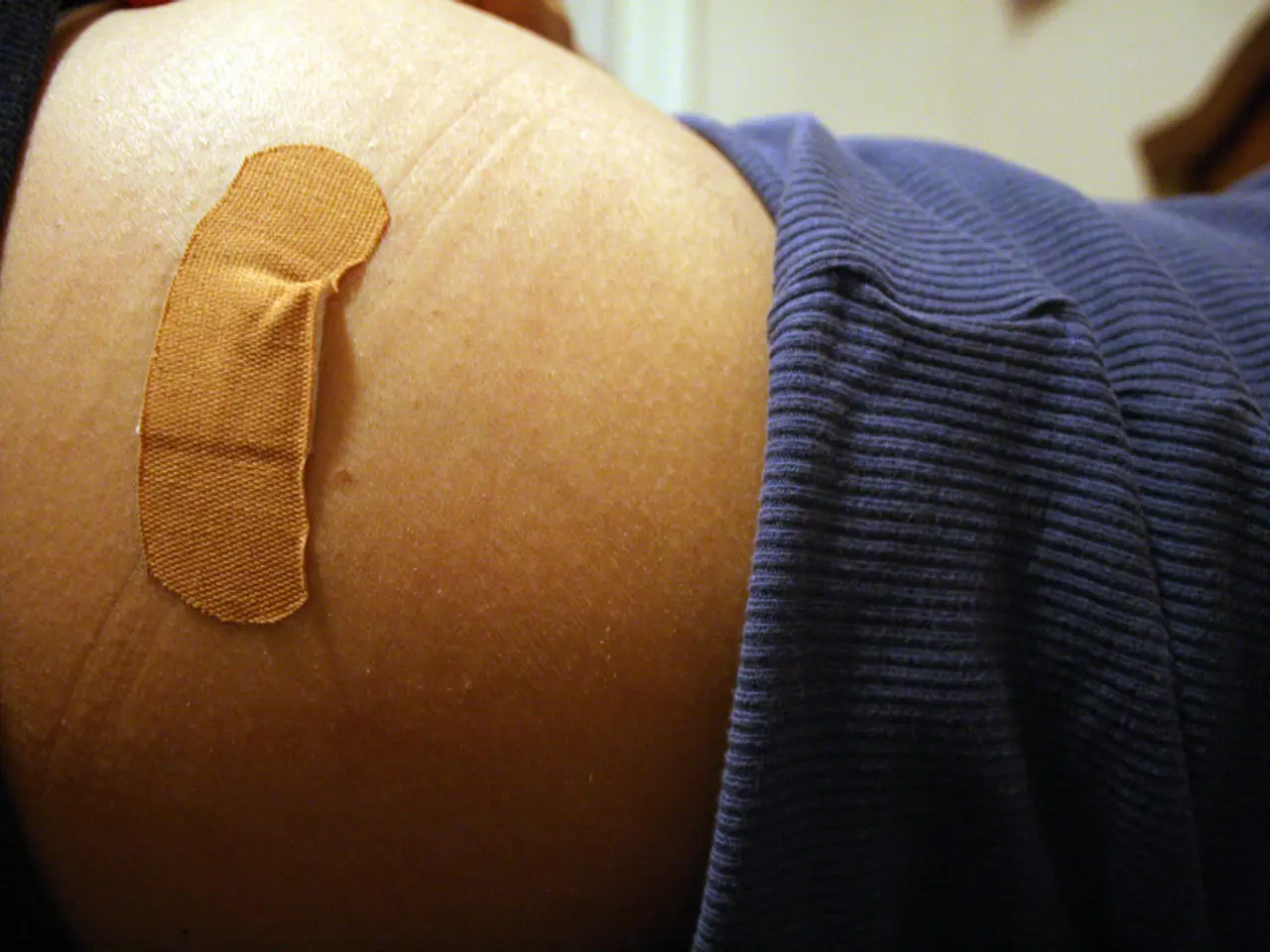Symptoms, root causes, and available remedies for breast yeast infections
Yeast infections, also known as cutaneous candidiasis, can develop in the skin folds under the breast, disrupting the comfort and well-being of individuals. This condition is primarily caused by an overgrowth of the yeast *Candida* on the skin[1][2].
Common causes for this overgrowth include moisture retention, heat and friction, a weakened immune system, antibiotic use, poor hygiene, and high sugar levels[1][3]. Sweat and trapped moisture in skin folds, as well as factors like wearing poorly fitted clothing, can provide an ideal environment for fungal growth.
Symptoms of a yeast infection on the breasts can include a red, itchy rash, small pimple-like or scaly round lesions, and in severe cases, skin that breaks down and oozes fluid[1][3].
Treatment and management focus on keeping the area clean and dry, using topical antifungal medications, avoiding moisture buildup, addressing underlying causes, and considering probiotics to support skin and gut flora balance[1][4]. Mild-to-moderate yeast infections can be treated with over-the-counter antifungal medications, while severe cases may require a stronger antifungal, such as ketoconazole (Nizoral), for which a prescription from a doctor is necessary[1][3][4].
For people who experience recurring yeast infections, speaking with a healthcare provider about lifestyle changes and medical treatments may be beneficial. Factors such as hyperhidrosis (excessive sweating) or living in hot, humid climates can increase the risk of developing a yeast infection on the breasts[1].
Individuals with type 2 diabetes or a weakened immune system have an increased risk of developing yeast infections, as do those who are obese[1]. To reduce the risk of developing a yeast infection, wearing breathable clothes and undergarments, washing thoroughly after swimming and working out, eating a balanced diet, maintaining a healthy body weight, and managing underlying health conditions are recommended[1].
Women may develop a yeast infection on their breast while pregnant or breastfeeding[1]. It is essential to consult a healthcare provider for proper diagnosis and treatment in such cases.
[1] Mayo Clinic. (2021). Yeast Infection (Candidiasis) of the Skin. Retrieved from
- Multiple medical conditions, such as diabetes, a weakened immune system, obesity, and pregnancy, can increase the risk of developing a yeast infection on the skin, including the breasts.
- In addition to the skin, yeast infections can also affect various health-and-wellness aspects, including women's health, women's-health conditions like vaginal health, and skin-conditions such as psoriasis.
- Medical science has identified several factors contributing to the rise in yeast infections, including depression, bipolar disorder, and HIV, as these conditions can weaken the immune system and create a breeding ground for fungal growth.
- Apart from the breasts, areas prone to moisture retention, such as the underarms, groin, and between the toes, are also susceptible to yeast infections.
- Beyond the breast, other medical-conditions like colitis, asthma, and multiple-sclerosis (MS) or sclerosis, can also exacerbate the risk of developing a yeast infection due to disturbed immune response and inflammation.
- In severe cases of yeast infections, complications like macular degeneration or ulcerative colitis can occur, resulting in eye damage or intestinal inflammation, indicating the need for prompt medical attention.
- A predictive analysis conducted by AQ Research found that women living in hot and humid climates or those experiencing excessive sweating (hyperhidrosis) are at an increased risk of developing a yeast infection on their breasts.
- To prevent the development of a yeast infection, following a healthy lifestyle, including maintaining a balanced diet, managing weight, and addressing underlying health conditions, can be beneficial.
- Probiotics may also play a role in preventing and managing yeast infections by supporting the balance of skin and gut flora, thus impeding the growth of harmful yeast species.
- Medical treatment for a yeast infection may involve prescription antifungal medications like ketoconazole (Nizoral) or a combination of topical antifungal creams and lifestyle modifications.
- Women who experience recurring yeast infections or those with certain health-and-wellness issues, such as pregnancy or breastfeeding, should consult with a healthcare provider to discuss appropriate prevention and treatment options.




